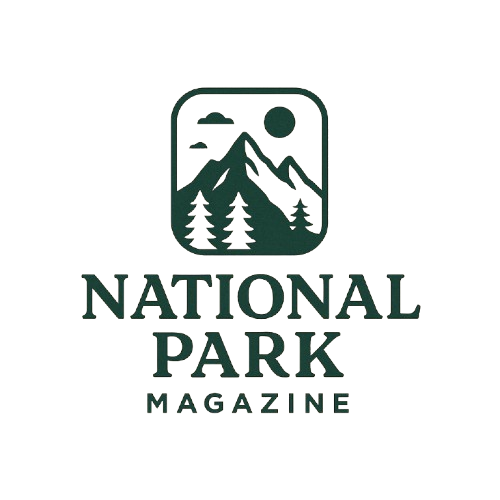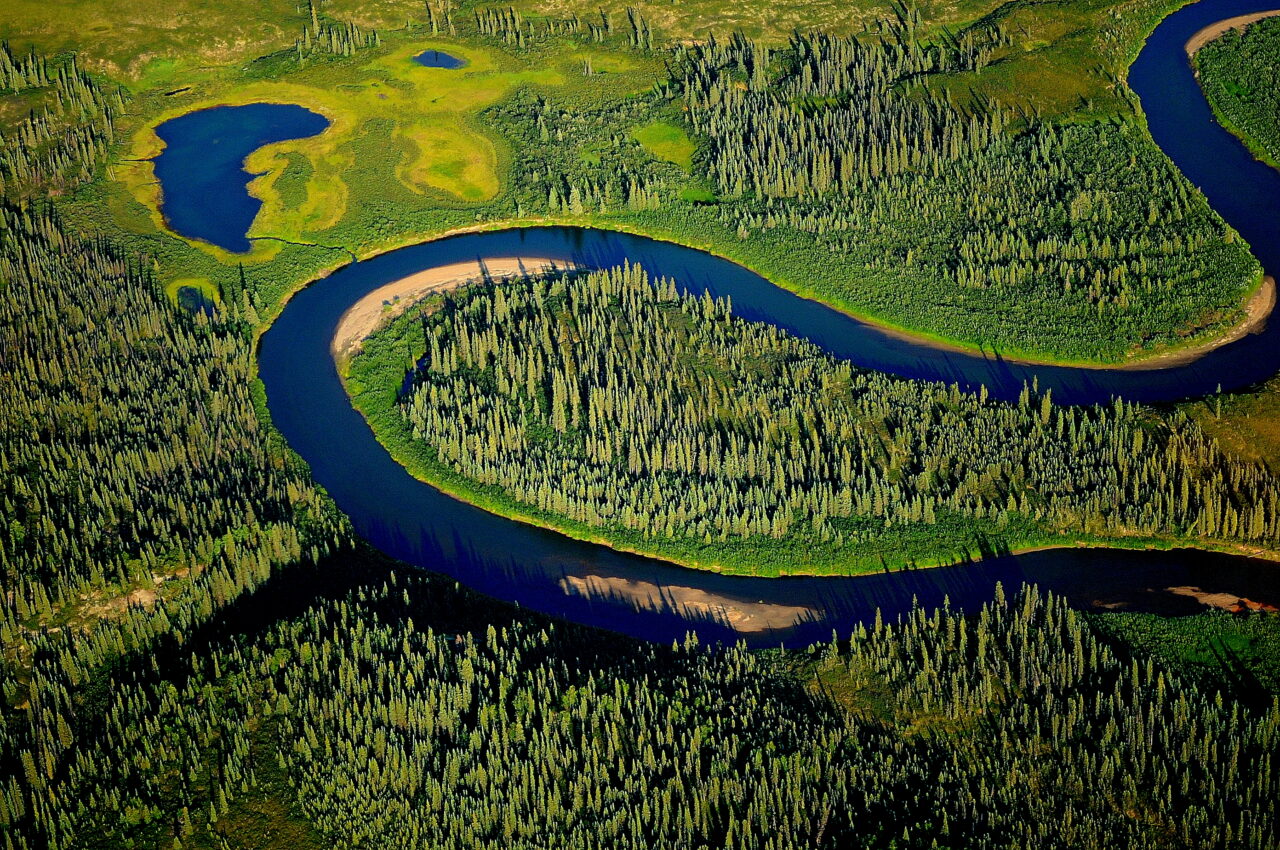Get more Noatak National Preserve Travel Tips & News here!
Where is Noatak National Preserve located?
Noatak National Preserve is situated in the Northwest Arctic Borough of Alaska, approximately 50 miles northwest of Kotzebue, a small town that serves as the gateway to the preserve. The town of Kotzebue is located on the Baldwin Peninsula, bordered by the Chukchi Sea to the west and offers a glimpse into the life of native Alaskan communities. The region is known for its rich cultural heritage, traditional subsistence lifestyles, and breathtaking northern landscapes. Nearby, the Noatak River flows through the preserve, providing a vital waterway for both wildlife and visitors.
Best Time to Visit Noatak National Preserve
The best time to visit Noatak National Preserve is during the summer months, from late June to early September. This period offers the most favorable weather conditions, with average temperatures ranging from 50°F to 70°F. Visitors can enjoy long daylight hours, which are ideal for hiking, fishing, and exploring the landscape.
While summer is the peak tourist season, it is essential to note that the preserve can experience occasional rain, and some areas may still be inaccessible due to melting snow or flooding. Autumn, particularly late August and early September, can also be a beautiful time to visit, as the foliage transforms into vibrant hues of gold and red. However, as the weather begins to cool, visitors should be prepared for shorter days and the potential for early snowfall.
Winter months are generally not recommended for visitation due to extreme cold and limited accessibility. Spring, particularly May, is marked by melting snow and rising rivers, making it a transitional period for wildlife but not ideal for most outdoor activities.
How to get to Noatak National Preserve?
Reaching Noatak National Preserve typically requires air travel, as there are no road connections to the preserve itself. The nearest major airport is Kotzebue (OTZ), which is served by several regional airlines offering flights from Anchorage. Once in Kotzebue, visitors can arrange for charter flights or boat transportation to access the preserve. Several local air services operate flights directly to various points within the national preserve, making it easier for adventurers to reach their desired destinations.
What to do when you arrive:
Upon arrival in Kotzebue, visitors can explore the local area before heading into the national preserve. The town has a small visitor center where tourists can obtain maps, brochures, and information about the preserve and the surrounding region. Accommodations in Kotzebue range from hotels to local guesthouses, offering a variety of options for visitors. It’s advisable to book accommodations in advance, especially during peak tourist season.
While in Kotzebue, visitors can also learn about the Inupiat culture and history through local museums and cultural centers. Engaging with local communities can provide a deeper understanding of the region’s heritage and the importance of the natural environment to the local way of life.
Getting Around Locally
Once at Noatak National Preserve, transportation options are limited due to the remote nature of the area. Most visitors rely on hiking, canoeing, or kayaking to explore the preserve. Boat rentals and guided tours are also available for those looking to navigate the waterways. For those interested in more remote areas, charter services can be arranged to transport visitors to specific locations within the park. It’s essential to plan ahead and ensure you have the appropriate gear and supplies for your chosen mode of exploration.
Top Things to Do and See at Noatak National Preserve:
- Noatak River:The Noatak River is one of the most significant features of the preserve, offering opportunities for canoeing, kayaking, and fishing. The river flows through stunning landscapes, providing access to various wildlife viewing opportunities along its banks.
- Hiking Trails:The preserve boasts numerous hiking trails that allow visitors to experience the diverse terrain up close. Trails range from easy walks to more challenging hikes, catering to all skill levels and offering breathtaking views of the surrounding mountains and valleys.
- Wildlife Viewing:Noatak National Preserve is home to a variety of wildlife, including caribou, grizzly bears, wolves, and numerous bird species. Wildlife viewing can be done throughout the preserve, but certain areas are particularly known for their animal populations, making them ideal spots for photographers and nature enthusiasts.
- Camping:For those looking to immerse themselves in nature, camping in Noatak National Preserve is a fantastic option. There are numerous campsites available, allowing visitors to spend the night under the stars and experience the tranquility of the Alaskan wilderness.
- Cultural Experiences:Engaging with the local Inupiat culture is a unique aspect of visiting Noatak National Preserve. Visitors can participate in guided cultural tours, learn about traditional subsistence lifestyles, and gain insight into the relationship between the indigenous people and their environment.
Suggested Itineraries
For a memorable trip to Noatak National Preserve, consider the following itineraries:
- 3-Day Adventure:Day 1: Arrive in Kotzebue, explore the local culture, and visit the visitor center. Day 2: Take a charter flight to the preserve, set up camp near the Noatak River, and spend the day canoeing and fishing. Day 3: Hike one of the trails, enjoy wildlife viewing, and return to Kotzebue in the evening.
- 5-Day Exploration:Day 1: Arrive in Kotzebue, acclimate, and visit local museums. Day 2: Fly to Noatak National Preserve, establish a base camp, and explore nearby hiking trails. Day 3: Spend the day on the Noatak River, kayaking and fishing. Day 4: Engage in cultural activities with local guides. Day 5: Return to Kotzebue for departure.
Permits & Fees
Visiting Noatak National Preserve does not require an entrance fee, but certain activities, such as camping, may require permits. It’s important to check with the National Park Service for the latest regulations and any necessary permits before your trip. Additionally, if you plan to use guided services or charter flights, be sure to confirm any associated costs ahead of time.
Nearby Day Trips & Detours
While Noatak National Preserve offers a wealth of activities, there are several nearby attractions worth exploring:
- Kotzebue:Explore the town of Kotzebue, learn about Inupiat culture, and enjoy local cuisine.
- Chukchi Sea:Take a boat tour to the Chukchi Sea for breathtaking views and potential whale sightings.
- Serpentine Hot Springs:A popular destination for those seeking relaxation, these natural hot springs are located a short flight from Kotzebue.
Local Culture & History
The culture and history of the Noatak National Preserve area are deeply rooted in the traditions of the Inupiat people. For thousands of years, the region has been inhabited by indigenous communities who rely on the land for subsistence. Visitors can learn about traditional practices such as hunting, fishing, and gathering, as well as the significance of the natural environment in Inupiat culture. Engaging with local guides can provide invaluable insight into the history of the area and the ongoing efforts to preserve the culture and natural resources of this stunning landscape.
Packing List & What to Bring to Noatak National Preserve
When planning your trip to Noatak National Preserve, it’s crucial to pack appropriately to ensure a comfortable and safe experience. The remote wilderness offers unique challenges, and being well-prepared can enhance your adventure. Here’s a comprehensive packing list to consider:
- Clothing:
- Layered clothing (moisture-wicking base layers, insulating mid-layers, waterproof outer layers)
- Warm hat and gloves
- Durable hiking boots
- Comfortable socks (preferably wool)
- Rain gear (jacket and pants)
- Camping Gear:
- Lightweight tent
- Sleeping bag (appropriate for low temperatures)
- Sleeping pad or air mattress
- Camping stove and fuel
- Cookware and utensils
- Food & Water:
- Non-perishable food items (dehydrated meals, energy bars, nuts)
- Portable water filter or purification tablets
- Reusable water bottles or hydration reservoir
- Navigation & Safety:
- Map of Noatak National Preserve
- Compass or GPS device
- First aid kit
- Multi-tool or knife
- Bear spray
- Personal Items:
- Toiletries (biodegradable soap, toothbrush, toothpaste)
- Sunscreen and lip balm with UV protection
- Insect repellent
- Camera and binoculars for wildlife watching
Remember to tailor your packing list based on the length of your stay and the activities you plan to engage in.
Wildlife & Nature Highlights
Noatak National Preserve is renowned for its diverse flora and fauna, providing visitors with numerous opportunities to observe wildlife in their natural habitats. Here are some notable highlights:
- Caribou Migration: The preserve is situated along the migration route of the Western Arctic Caribou Herd, one of the largest caribou herds in North America. Witnessing the migration can be a breathtaking experience.
- Birdwatching: Over 150 species of birds have been documented in the area, including migratory birds like the Arctic Tern and various species of waterfowl. Bring your binoculars to spot these incredible creatures.
- Unique Flora: The preserve hosts a range of plant species adapted to the Arctic environment. Wildflowers bloom in the short summer months, adding vibrant colors to the landscape.
- Aquatic Life: The rivers and lakes in the preserve are teeming with fish species, including salmon, grayling, and pike. Fishing here can be both relaxing and rewarding.
Respect for wildlife is paramount; maintain a safe distance and observe from afar to minimize disturbances.
Accessibility Information
Noatak National Preserve offers a unique wilderness experience, but accessibility can be challenging due to the remote terrain. Here are some considerations for visitors with disabilities:
- Access to Facilities: The visitor center in Kotzebue is wheelchair accessible, but facilities within the preserve are limited. Most trails are unpaved and may not accommodate wheelchairs or mobility aids.
- Transportation: Charter flights to various points in the preserve are available, but ensure to communicate any special needs when booking.
- Assistance: If you require assistance, consider traveling with a companion or hiring a guide who can help navigate the more challenging aspects of the wilderness.
It’s essential to plan ahead and contact the National Park Service for more specific guidance on accessibility options.
Noatak National Preserve FAQs
Here are some frequently asked questions to help you better prepare for your adventure to Noatak National Preserve:
- Do I need a permit to visit? No entrance fee is required, but permits may be needed for certain activities like camping. Check with the National Park Service for details.
- Are there any facilities in the preserve? Facilities are minimal. Visitors should be prepared for a backcountry experience with limited amenities.
- What is the cell phone reception like? Cell phone service is very limited in the preserve. It’s advisable to inform someone of your travel plans before heading out.
- Can I fish in the preserve? Yes, fishing is permitted in designated areas. Be sure to check local regulations regarding licenses and catch limits.
- What wildlife should I be cautious of? Grizzly bears and wolves inhabit the area. Familiarize yourself with bear safety guidelines before your visit.
Additional Resources for Noatak National Preserve
To enhance your trip and ensure you have the most current information, consider these resources:
- National Park Service – Noatak National Preserve: The official site provides up-to-date information on park regulations, trail maps, and safety tips.
- National Weather Service: Check for weather alerts and forecasts to prepare for changing conditions.
- Alaska Travel Guide: A comprehensive resource for travel tips, accommodations, and activities throughout Alaska.
- Recreation.gov: Book permits and find information on camping and other recreational opportunities in the preserve.
By utilizing these resources, you can ensure a well-rounded and enjoyable experience in Noatak National Preserve, making the most of your time in this incredible wilderness.
Follow us on social media for more!


